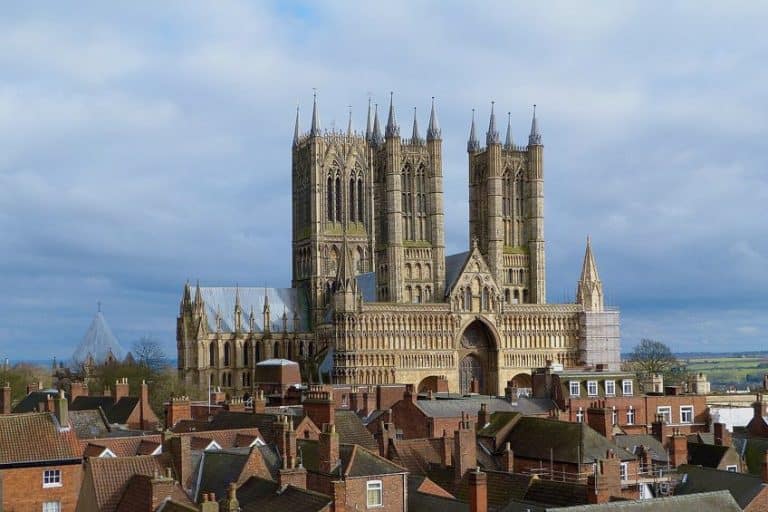Tallest Buildings in the World – Discover World’s Tallest Skyscrapers
Humankind is always trying to reach new heights, and it is no different when it comes to the tallest buildings in the world. What’s the biggest building in the world though, as well as the other famous tall buildings? In this article, we will be discovering the tallest skyscrapers currently built as well as discussing the largest building in the world.
Table of Contents
- 1 The 21 Tallest Buildings in the World
- 1.1 1. Burj Khalifa (Dubai, United Arab Emirates)
- 1.2 2. Shanghai Tower (Shanghai, China)
- 1.3 3. Makkah Royal Clock Tower (Mecca, Saudi Arabia)
- 1.4 4. Ping’An Finance Center (Shenzhen, China)
- 1.5 5. Lotte World Tower (Seoul, South Korea)
- 1.6 6. One World Trade Center (New York, USA)
- 1.7 7. Guangzhou CTF Finance Center (Guangzhou, China)
- 1.8 8. Tianjin Finance Center (Tianjin, China)
- 1.9 9. China Zun Tower (Beijing, China)
- 1.10 10. TAIPEI 101 (Taipei, Taiwan)
- 1.11 11. Shanghai World Financial Center (Shanghai, China)
- 1.12 12. International Commerce Center (Hong Kong, China)
- 1.13 13. Central Park Tower (New York, USA)
- 1.14 14. Lakhta Center (St. Petersburg, Russia)
- 1.15 15. Vincom Landmark 81 (Ho Chi Minh City, Vietnam)
- 1.16 16. Changsha IFS Tower T1 (Changsha, Hunan, China)
- 1.17 17. Petronas Twin Tower 1 (Kuala Lumpur, Malaysia)
- 1.18 18. Zifeng Tower (Nanjing, Jiangsu, China)
- 1.19 19. The Exchange 106 (Kuala Lumpur, Malaysia)
- 1.20 20. Wuhan Center Tower (Wuhan, Hubei, China)
- 1.21 21. Willis Tower (Chicago, USA)
- 2 Overview of the World’s largest Skyscrapers (List)
- 3 Frequently Asked Questions
The 21 Tallest Buildings in the World
Which famous tall buildings can you mention? Many of the tallest skyscrapers from our childhood have for many years been superseded by far taller structures. Let us find out what’s the biggest building in the world. We will start with the tallest building first.
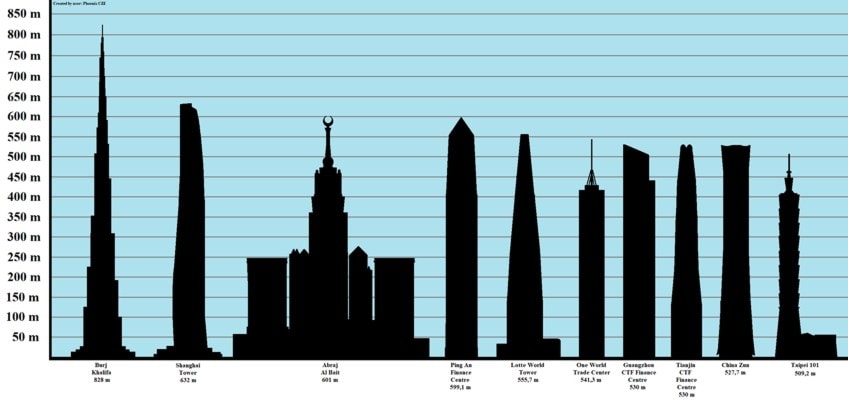
1. Burj Khalifa (Dubai, United Arab Emirates)
| Date Completed | 2010 |
| Function | Residential, hotel, offices |
| Height | 828 meters |
| Location | Dubai, United Arab Emirates |
| Architect | Adrian Smith |
The construction of the Burj Khalifa, the largest building in the world, began in 2004, with the exterior finished in 2009. The core construction is reinforced concrete, and some of the steel structures for the project came from the old East German parliament. The building was finished in 2010 as part of the Downtown Dubai redevelopment.
The plan to establish the skyscraper was predicated on the government’s goal to broaden the economy away from an oil-dependent economy and for Dubai to obtain international prominence.
The design is inspired by the region’s Islamic architecture. At some point throughout the design and engineering process, the original creators ran into financial difficulties and needed extra money and economic financing.

2. Shanghai Tower (Shanghai, China)
| Date Completed | 2015 |
| Function | Offices, hotel |
| Height | 632 meters |
| Location | Shanghai, China |
| Architect | Marshall Strabala |
The skyscraper is composed of nine cylindrical towers built on top of one another, totaling 128 stories, all encased by the inner layers of the glass facade. Between it and the outermost part, which bends as it rises, nine inside zones give guests public space. Each one of these nine districts has its own atrium with lawns, restaurants, cafes, and commercial shops, as well as breathtaking views of the city. Both sections of the façade are transparent, and the tower’s base includes shop and event space.
Most structures have a single façade made of very reflective glass to prevent the absorption of heat, but the Shanghai Tower’s second layer of glass avoids the requirement for either layer to be opaque.

3. Makkah Royal Clock Tower (Mecca, Saudi Arabia)
| Date Completed | 2012 |
| Function | Mixed-use |
| Height | 601 meters |
| Location | Mecca, Saudi Arabia |
| Architect | Dar al-Handasah Shair |
The towers sparked significant debate since they were built on the site of the famous 18th-century Ottoman Ajyad Fortress, which was destroyed to make space for them. The tower complex is just meters from the Great Mosque of Mecca, the world’s biggest mosque and Islam’s holiest shrine. The building’s highest tower is the tallest skyscraper in Saudi Arabia.
The Abraj Al-Bait Towers include two huge prayer halls that can seat more than 10,000 pilgrims visiting the Kaaba.
During the development of the Abraj-Al-Bait complex, there were two fires. According to eyewitnesses, the fire broke out just after midnight and spread quickly due to construction timber stored on the site. The entire structure was quickly covered in smoke. Although hospitals were placed on high alert, no casualties were recorded.
4. Ping’An Finance Center (Shenzhen, China)
| Date Completed | 2017 |
| Function | Offices |
| Height | 599 meters |
| Location | Shenzhen, China |
| Architect | Kohn Pedersen Fox Associates |
The Ping’An Finance Center, located in the city’s Futian District, symbolizes a new version of the traditional Asian skyscraper: very tall, highly dense, and extremely well-connected. This famous and iconic building emerges from a prominent site in the city center, effortlessly linking to other business and residential complexes, as well as the high-speed rail network of the Pearl River Delta. At its full height, the skyscraper will represent a metropolis that has seen tremendous urban expansion – from 300,000 to around 10 million people – in the 35 years since it became China’s first Special Economic Zone.
The tower is shaped like a stretched steel wire, extended by both the sky and the earth.

5. Lotte World Tower (Seoul, South Korea)
| Date Completed | 2017 |
| Function | Hotel, retail, residential |
| Height | 554 meters |
| Location | Seoul, South Korea |
| Architect | James von Klemperer |
Following 13 years of preparation and site planning, the government granted the tower final clearance to begin building in November 2010, and the first groundbreaking operations of piling and frame assembly were witnessed at the construction site in March. The roof structure is designed to support its weight without the use of reinforcing supports.
This is a Seoul landmark and Korea’s first 100-story structure.
When the building was finished, it was named the world’s fourth-highest tower as well as the highest in the OECD (The Organization for Economic Co-operation and Development) countries. The view level features spectacular panoramas, as well as a telescope and even a glass floor. As of the building’s completion, the skylight that can be found at the Seoul Sky was the tallest glass floor observatory.
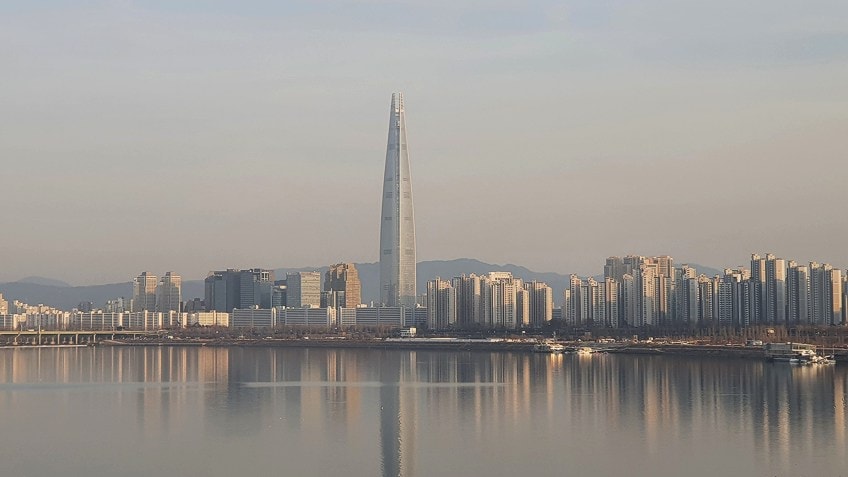
6. One World Trade Center (New York, USA)
| Date Completed | 2014 |
| Function | Offices |
| Height | 541 meters |
| Location | New York, United States of America |
| Architect | Daniel Libeskind |
One World Trade Center (WTC) is a dazzling light for the newer Downtown area and a striking additional feature to the city’s skyline. It is sustainable and safe, and aesthetically exciting. With a height of 1,776 feet, it is the tallest structure in the Western Hemisphere and an iconic New York landmark.
With entrances on all four sides of the skyscraper, One WTC has been intended to seamlessly combine visitor and office tenant activity.
The size of the building’s base is exactly the same as that of the original Twin Towers. There are around 2,000 pieces of glittering prismatic glass covering the base’s surface. One WTC’s crown is a spire made up of a mast and a communications platform ring. At night time, a beacon at the summit emits a horizontal light beam that may be seen for kilometers.

7. Guangzhou CTF Finance Center (Guangzhou, China)
| Date Completed | 2016 |
| Function | Offices, hotel |
| Height | 530 meters |
| Location | Guangzhou, China |
| Architect | Kohn Pedersen Fox |
The Guangzhou Chow Tai Fook (CTF) Finance Center is a paradigm of sustainable, high-density, center-city design, with a facade consisting of corrosion-resistant glazed terra cotta and metal, as well as glass. The terracotta mullions lighten the building’s façade. The building designers used a variety of approaches to make the center more ecologically friendly. For instance, the skyscraper uses energy-efficient methods to lessen its environmental imprints, such as new chillers and a platform roof covered with solar panels.
The building was designed by Arup Group, and Rostek access systems were chosen for the difficult maintenance of lower floors as well as the upper in a hotel swimming pool.

8. Tianjin Finance Center (Tianjin, China)
| Date Completed | 2019 |
| Function | Offices, hotel |
| Height | 530 meters |
| Location | Tianjin, China |
| Architect | Ronald Lu & Partners |
This skyscraper merges complicated programmatic aspects and is surrounded by a smart facade that portrays a delicate interplay of light and structure. It is a breakthrough paradigm of physical and mechanical efficiency. The design of the tower combines stylistic, architectural, and functional criteria.
The geometry, which is square in plan with rounded corners, maximizes the efficiency of its three thematic uses—office, hotel, and apartments—which are positioned to meet the optimal spans for each of these functions.
With longer lease lengths for office floors and shorter spans for residential and hotel levels to optimize views. The curved facade of the skyscraper is the outcome of structural efficiency techniques. Its crystalline glass panels extend from the foyer to the crown, giving the overall architecture of the building a powerful monolithic character.

9. China Zun Tower (Beijing, China)
| Date Completed | 2018 |
| Function | Offices |
| Height | 527 meters |
| Location | Beijing, China |
| Architect | Kohn Pedersen Fox |
According to the creators, the term China Zun derives from the zun, an antique Chinese wine cup that influenced the building design. The skyscraper is set to remain Beijing’s tallest structure for the foreseeable future, as officials in 2018 limited new developments in the central business area to no more than 180 meters in order to relieve congestion.
In 2018, a tabloid from Hong Kong revealed that the national-security machinery was planning to seize China Zun’s top three floors, as well as an observation deck on level 108 for the headquarters of the Communist Party of China to be observed with the human eye from the upper section of the highrise on a normal day.

10. TAIPEI 101 (Taipei, Taiwan)
| Date Completed | 2004 |
| Function | Offices |
| Height | 508 meters |
| Location | Taipei, Taiwan |
| Architect | C.Y. Lee & C.P. Wang |
To construct the entire, structural pieces are connected on top of each other. This rhythmic aesthetic is novel in skyscrapers. For catastrophe and wind damage protection, the segmental TAIPEI 101 incorporates a Mega Structure System. Wind impacts on the surface of high-rise structures are removed since every eight floors is an autonomous area. The foundation’s design ensures pedestrian comfort and safety. The structure is a reflection of traditional Chinese architectural theory, like the flexible but tenacious bamboo that rises towards the sky.
The translucent and non-reflective screens are energy efficient and heat-reflecting, providing residents with a clear perspective of the world around them.
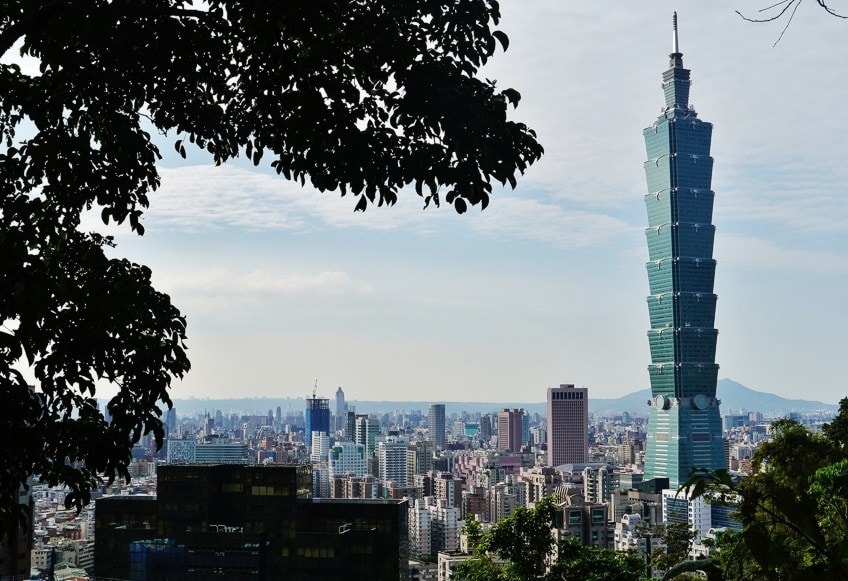
11. Shanghai World Financial Center (Shanghai, China)
| Date Completed | 2008 |
| Function | Offices, hotel |
| Height | 492 meters |
| Location | Shanghai, China |
| Architect | William Pedersen |
In Shanghai, China, the Shanghai World Financial Center is a mixed-use skyscraper. The skyscraper is located in the city’s Pudong sector, next to the 88-story Jin Mao Tower. It is 101 floors tall and was designed by the American architectural company Kohn Pedersen Fox Associates of New York City. After an 11-year development process, the building was opened in 2008. At the time of its construction, it was the world’s second-tallest structure, trailing only the Taipei 101 skyscraper in Taipei, Taiwan. However, it was later overtaken by larger projects.
This is China’s highest structure.

12. International Commerce Center (Hong Kong, China)
| Date Completed | 2010 |
| Function | Offices, hotel |
| Height | 484 meters |
| Location | Hong Kong, China |
| Architect | Kohn Pedersen Fox |
The ICC is a corporate tower in Hong Kong, that opened in 2010. It’s a key component of the Union Square construction, which is situated above Kowloon station. It was the globe’s fourth-highest skyscraper when it was completed in 2010. It was the ninth highest building in the world by floor number since about June 2019, the tallest building in Hong Kong, and the sixth-highest structure in China if regions are also included. The building of this tower was overseen by Hong Kong’s metro operator and leading property developer.
The height had been reduced from the original designs due to rules that prohibited structures from being taller than the surrounding mountains.
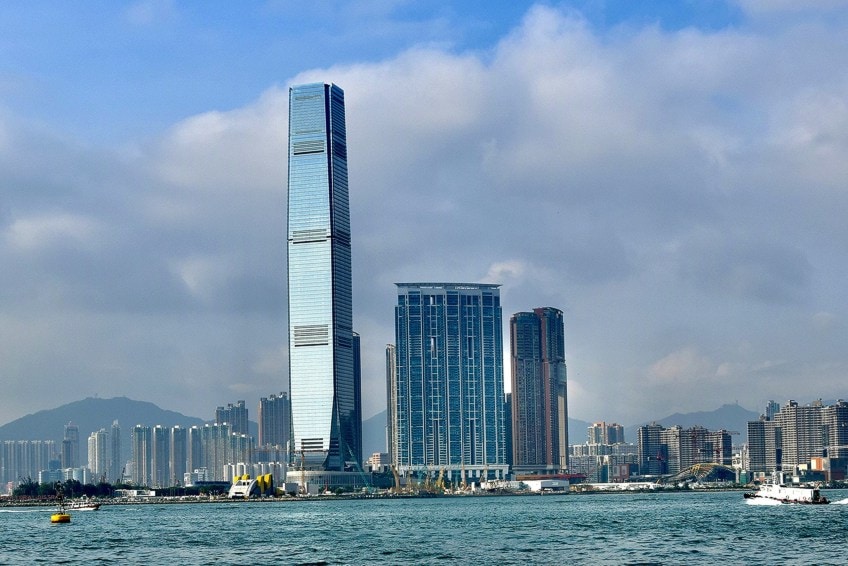
13. Central Park Tower (New York, USA)
| Date Completed | 2020 |
| Function | Residential |
| Height | 472 meters |
| Location | New York, United States of America |
| Architect | Adrian Smith |
The highest residential skyscraper ever built was the culmination of a decade of planning and collaboration between the architects. The refined and distinctive façade reflects a dynamic variety of color and light as the sun moves across the surface of the building. Central Park Tower is the ideal urban resort, with its breathtaking vistas, magnificent architecture, elegant design, and hotel-style service.
The unique footprint of Central Park Tower enables the development of the city’s most magnificent apartments, complete with personalized embellishments, the best natural finishes, and the most spectacular vistas in New York.
The living and leisure areas are located in the corners of the apartments to take advantage of varied panoramas and city views. The globally acclaimed residential and hospitality business, which is the preferred designer for Four Seasons resorts, created detailed living and entertaining rooms as well as principal suites that fit any design sensibility, from classic to contemporary.
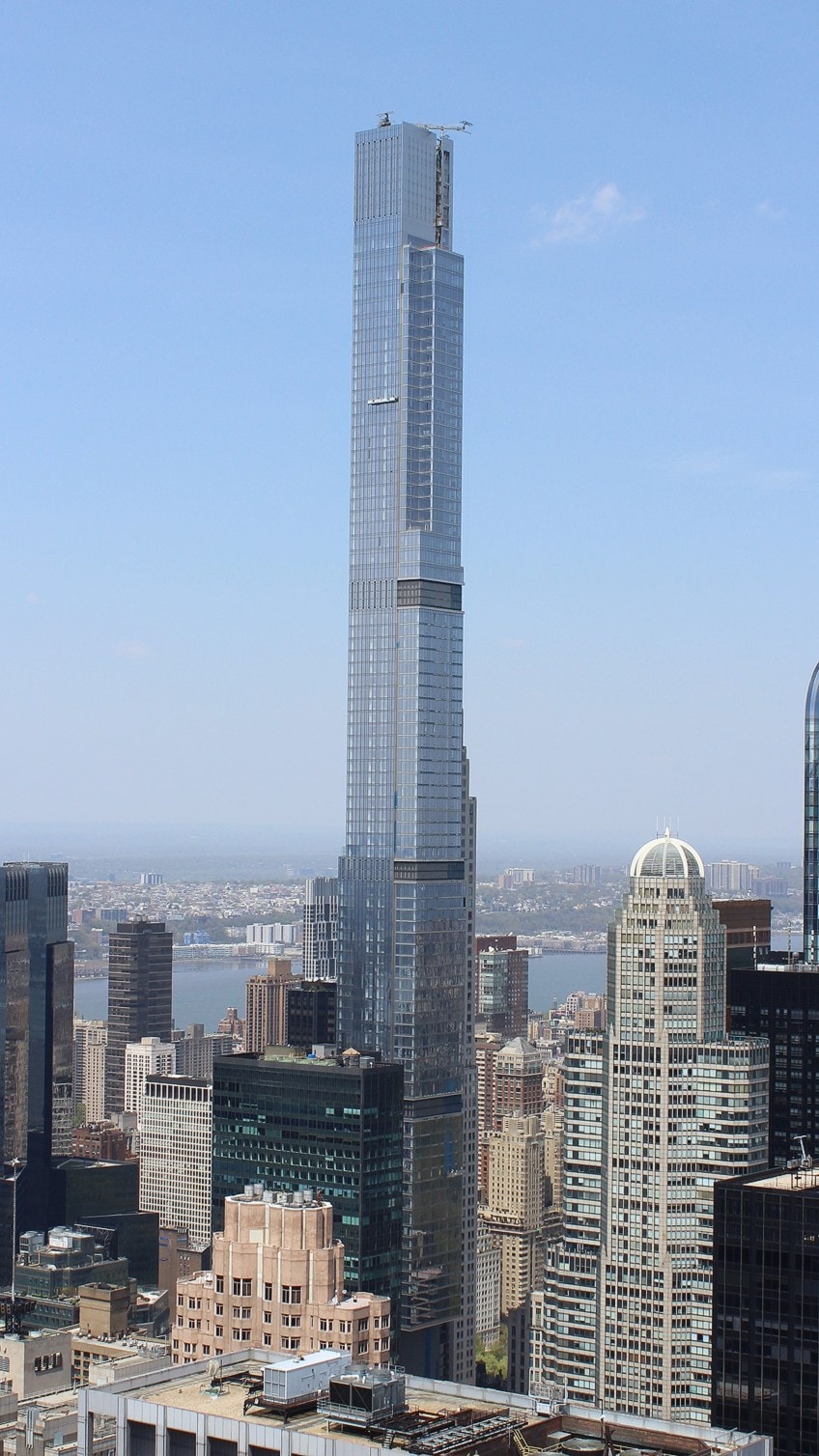
14. Lakhta Center (St. Petersburg, Russia)
| Date Completed | 2019 |
| Function | Offices |
| Height | 462 meters |
| Location | St. Petersburg, Russa |
| Architect | Tony Kettle |
The tower’s design incorporates various green and energy-saving technology. The premises are heated using excess heat generated by technical equipment. The building also employs low-noise technology, noise suppressors, and sound-proof curtain walls.
The likelihood of icing up structures is rather significant due to the features of the excessively humid and windy environment in Russia’s North-Western area.
Engineers used metal gauze instead of glassing to prevent the tower’s spire from completely freezing up. High-rise glass will be heated to avoid ice formation and provide optimal vision. A new freestanding power substation will be built to deliver energy to Lakhta Center and surrounding regions without putting additional strain on current infrastructure.

15. Vincom Landmark 81 (Ho Chi Minh City, Vietnam)
| Date Completed | 2018 |
| Function | Residential, hotel |
| Height | 461 meters |
| Location | Ho Chi Minh City, Vietnam |
| Architect | Atkins |
The tower’s groundbreaking ceremony took place on December 13, 2014. In October 2017, work reached level 69, and at a height of 270 meters, it overtook the Bitexco Financial Tower to become Ho Chi Minh City’s highest skyscraper. By January 2018, all levels had been completed, with only the spire and crown left to be erected. The last part of the crown spire was completed on April 10, 2018, completing Landmark 81 architecturally.
The base of the building, which has six stories and a total area of 50,000 meters squared, was formally inaugurated on July 27, 2018, to commemorate the 25th anniversary of its owner’s parent company, Vingroup.
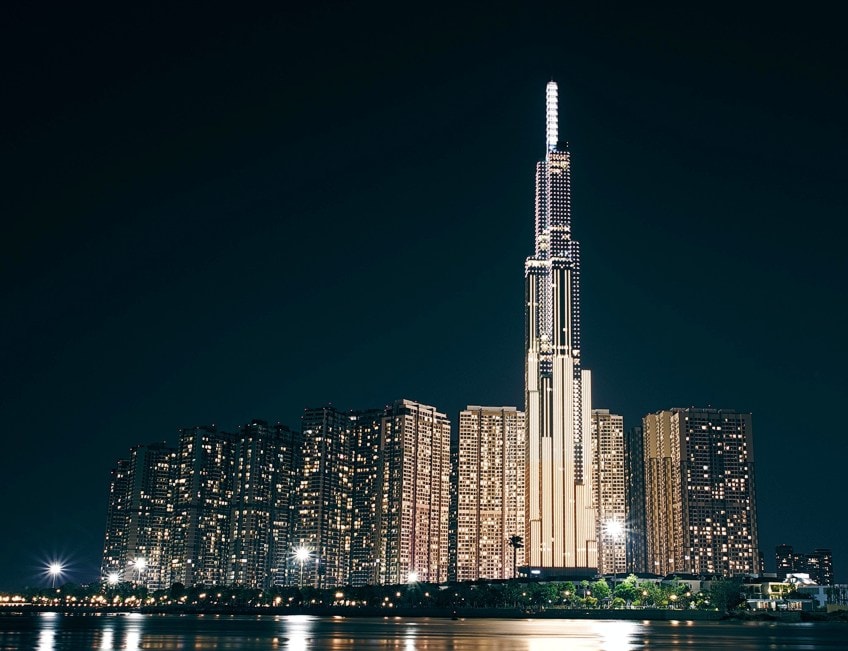
16. Changsha IFS Tower T1 (Changsha, Hunan, China)
| Date Completed | 2018 |
| Function | Offices, hotel |
| Height | 452 meters |
| Location | Changsha, Hunan, China |
| Architect | Wong Tung & Partners. |
This twin-tower Changsha IFS (International Finance Square) Tower T1 skyscraper is modeled on Harbour City, Hong Kong’s hyper-connected retail area. The Changsha complex has an underground network that connects to a projected Changsha metro line interchange point.
The same subterranean route will link to Huang Xing Road Pedestrian Shopping Street, one of China’s busiest pedestrian walkways.
The project includes two towers. One tower is around 452 meters in height and the other around 315 meters. The rectangular shape of the glass-clad towers is broken up by a number of metal fins that provide intricacy to their look while also reducing glare in the inner office areas. Tower 1 has a crown that gradually recedes by several meters at three spots.

17. Petronas Twin Tower 1 (Kuala Lumpur, Malaysia)
| Date Completed | 1998 |
| Function | Offices |
| Height | 451 meters |
| Location | Kuala Lumpur, Malaysia |
| Architect | Cesar Pelli |
Originally, the Petraons towers were to be erected at a height of just 427 meters. Fortunately, Dr. Mahathir recognized the building’s potential as one of the world’s tallest buildings and encouraged architects and engineers to incorporate a few extra meters of height in every manner imaginable. Many architectural facts were revised and rechecked in wind tunnels to fulfill his goals. This culminated in the installation of a dome with an incorporated pinnacle atop the towers, allowing them to reach 452m in height, exceeding the Sears Tower in the United States.
The interior designs are inspired by Malaysian handicrafts and weaving patterns, and the structure is finished in a spectacular blend of stainless steel and glass to generate exquisite Islamic patterns.

18. Zifeng Tower (Nanjing, Jiangsu, China)
| Date Completed | 2010 |
| Function | Offices, hotel |
| Height | 450 meters |
| Location | Nanjing, Jiangsu, China |
| Architect | Adrian Smith |
The Zifeng Tower is a mixed-use development in Nanjing, Jiangsu. Nanjing holds an important role in Chinese culture and history, having served as the capital of several Chinese dynasties, kingdoms, and republics. The structure is designed with landscaped, clear-glass atria, and the top of the tower holds eateries and an observatory.
The Nanjing Greenland Financial Center’s distinctive triangle shape was created to maximize the site’s form, size, and direction.
The design of the structure is inspired by the surrounding landscape: the tower is placed to optimize views of the adjacent mountains, lake, and old Nanjing buildings, and the different kinds that encircle the center core of the tower replicate “dancing dragons,” a prominent theme in Chinese iconography.
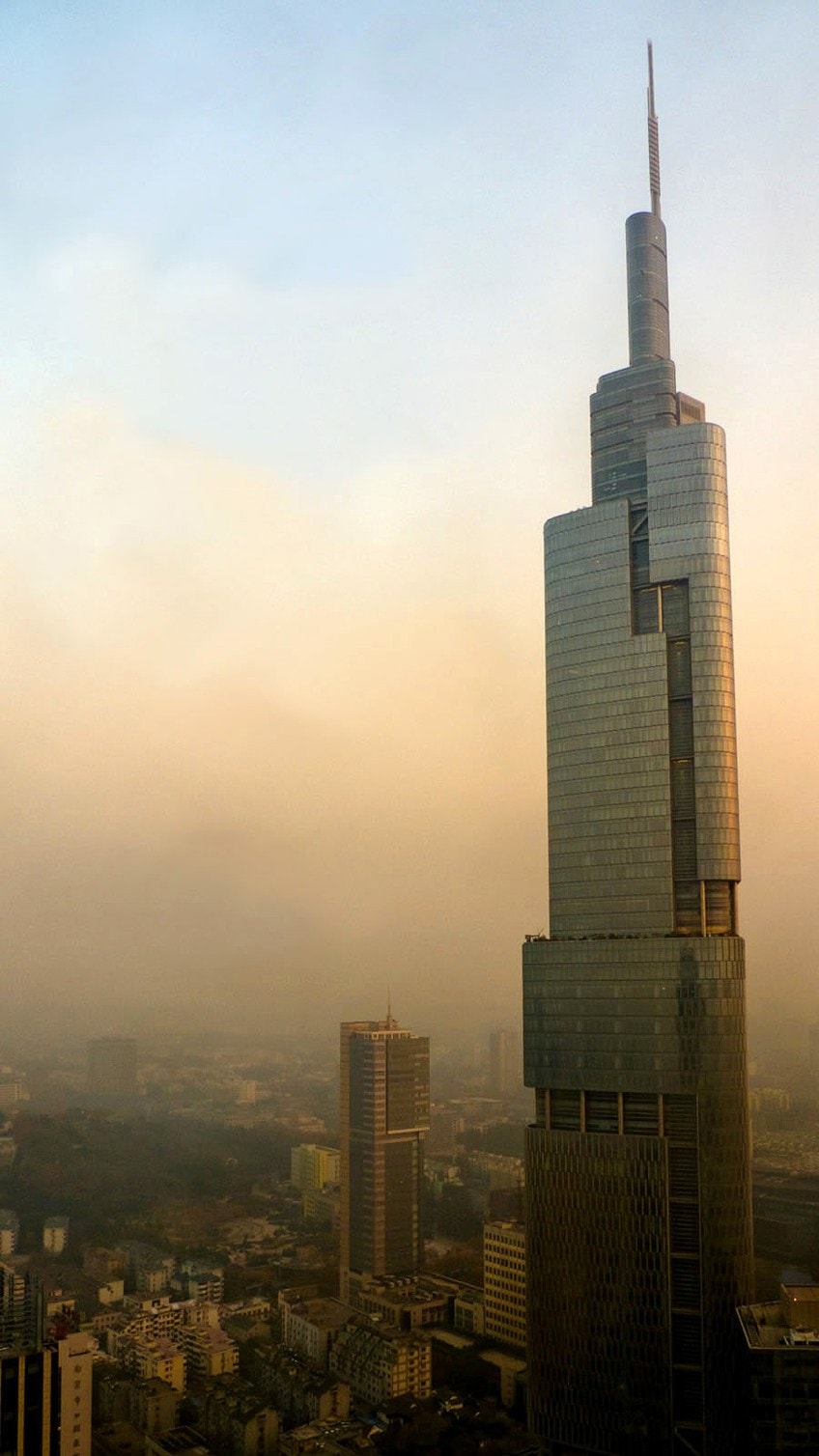
19. The Exchange 106 (Kuala Lumpur, Malaysia)
| Date Completed | 2019 |
| Function | Offices |
| Height | 445 meters |
| Location | Kuala Lumpur, Malaysia |
| Architect | Peter Chan |
Exchange 106, with its solitary tower fearlessly soaring into the sky, embodies beautiful refinement and the nation’s goals. It is a magnificent building that commands one’s attention. In doing so, it not only attracts but also develops outstanding ideas, collaborations, and enterprises. Its 106 stories soaring above the city is like a light beacon visible for miles, an iconic representation of a rising nation.
The spectacular architecture and thoughtful design provide unrivaled space, possibilities, and amenities, assuring that it will become one of the most desired after business locations not just in South East Asia, but globally.

20. Wuhan Center Tower (Wuhan, Hubei, China)
| Date Completed | 2019 |
| Function | Offices, residential |
| Height | 443 meters |
| Location | Wuhan, Hubei, China |
| Architect | Gordon Gill |
Several novel design strategies are used in the project to make the building more efficient. The footprint of the tower is tripod-shaped and the tower’s three curving edges have gently rounded glass corners, standing out against the textured curtain wall. They ascend to create the peak of the construction, which is shaped like an arching dome. The tower design was inspired by Wuhan’s unusual geography, which is divided into three sections by two rivers. The skyscraper also has various sustainable elements, as well as an eco-tower.
The Wuhan tower’s flowing conical structure minimizes the overall volume of materials necessary for its construction.

21. Willis Tower (Chicago, USA)
| Date Completed | 1974 |
| Function | Offices |
| Height | 442 meters |
| Location | Chicago, United States of America |
| Architect | Fazlur Rahman Khan |
In downtown Chicago, the Willis Tower is the prospect of employment and entertainment. The 110-story skyscraper is one of the world’s biggest and North America’s second-highest, making it tough to miss when enjoying the cityscape. The scale of this stunning steel-framed skyscraper may be overwhelming. The Willis Tower project began in 1969 when Sears Roebuck & Company determined it required a central office area for its 350,000 workers.
The redevelopment’s objective is to create an all-season urban destination that draws together the surrounding community and establishes a genuine neighborhood in the center of downtown Chicago.

Overview of the World’s largest Skyscrapers (List)
| Rank | Name | Location (country and city) | Height (feet) | Height (meters) | Number of floors | Year of completion |
|---|---|---|---|---|---|---|
| 1 | Burj Khalifa | Dubai, United Arab Emirates | 2,717 | 828 | 163 | 2010 |
| 2 | Shanghai Tower | Shanghai, China | 2,073 | 632 | 128 | 2015 |
| 3 | Abraj Al-Bait Clock Tower | Mecca, Saudi Arabia | 1,971 | 601 | 120 | 2012 |
| 4 | Ping An Finance Center | Shenzhen, China | 1,965 | 599 | 115 | 2017 |
| 5 | Lotte World Tower | Seoul, South Korea | 1,819 | 554 | 123 | 2017 |
| 6 | One World Trade Center | New York, USA | 1,776 | 541 | 104 | 2014 |
| 7 | CTF Finance Centre | Guangzhou, China | 1,739 | 530 | 111 | 2016 |
| 8 | Taipei 101 | Taipei, Taiwan | 1,671 | 509 | 101 | 2004 |
| 9 | Shanghai World Financial Center | Shanghai, China | 1,614 | 492 | 101 | 2008 |
| 10 | International Commerce Centre | Hong Kong, China | 1,588 | 484 | 118 | 2010 |
| 11 | KLCC | Kuala Lumpur, Malaysia | 1,483 | 452 | 88 | 1998 |
| 12 | Zifeng Tower | Nanjing, China | 1,476 | 449 | 89 | 2010 |
| 13 | Willis Tower | Chicago, USA | 1,451 | 442 | 108 | 1974 |
| 14 | Petronas Twin Towers | Kuala Lumpur, Malaysia | 1,483 | 452 | 88 | 1998 |
| 15 | CITIC Plaza | Guangzhou, China | 1,383 | 421 | 80 | 1996 |
| 16 | John Hancock Center | Chicago, USA | 1,127 | 344 | 100 | 1969 |
| 17 | Taipei 101 | Taipei, Taiwan | 1,116 | 340 | 101 | 2004 |
| 18 | Empire State Building | New York, USA | 1,250 | 381 | 102 | 1931 |
| 19 | Nasrec Tower | Johannesburg, South Africa | 1,093 | 333 | 76 | 2013 |
| 20 | Tianjin CTF Finance Centre | Tianjin, China | 1,083 | 330 | 89 | 2019 |
| 21 | Central Park Tower | New York, USA | 1,550 | 472 | 111 | 2020 |
Today we have explored the largest building in the world. We have also looked at the other tallest buildings in the world and the reason they were built. What are your thoughts on our list of famous tall buildings from around the world?
Frequently Asked Questions
What Is the Biggest Building in the World?
At the moment, the largest building in the world is the Burj Khalifa. It is 828 meters in height. The design is inspired by the region’s Islamic architecture.
What Is the Second Tallest Building in the World?
The second tallest building is the Shanghai Tower. It is 632 meters in height. It can be found in Shanghai. The skyscraper is composed of nine cylindrical towers built on top of one another, totaling 128 stories, all encased by the inner layers of the glass facade. The government’s purpose in constructing the tower was to diversify the economy away from its reliance on oil and for Dubai to gain international recognition.
Which Building has the Most Floors?
The tallest building in the world, as of 2022, is the Burj Khalifa in Dubai. It boasts an impressive 163 floors, making it the king of skyscrapers.
What Will be the Next Tallest Building?
The highest building under construction is the Jeddah Tower in Jeddah, Saudi Arabia. It is set to be over a kilometer tall with more than 170 floors, surpassing the Burj Khalifa in Dubai as the world’s tallest building.
Justin van Huyssteen is a freelance writer, novelist, and academic originally from Cape Town, South Africa. At present, he has a bachelor’s degree in English and literary theory and an honor’s degree in literary theory. He is currently working towards his master’s degree in literary theory with a focus on animal studies, critical theory, and semiotics within literature. As a novelist and freelancer, he often writes under the pen name L.C. Lupus.
Justin’s preferred literary movements include modern and postmodern literature with literary fiction and genre fiction like sci-fi, post-apocalyptic, and horror being of particular interest. His academia extends to his interest in prose and narratology. He enjoys analyzing a variety of mediums through a literary lens, such as graphic novels, film, and video games.
Justin is working for artincontext.org as an author and content writer since 2022. He is responsible for all blog posts about architecture, literature and poetry.
Learn more about Justin van Huyssteen and the Art in Context Team.
Cite this Article
Justin, van Huyssteen, “Tallest Buildings in the World – Discover World’s Tallest Skyscrapers.” Art in Context. May 25, 2022. URL: https://artincontext.org/tallest-buildings-in-the-world/
van Huyssteen, J. (2022, 25 May). Tallest Buildings in the World – Discover World’s Tallest Skyscrapers. Art in Context. https://artincontext.org/tallest-buildings-in-the-world/
van Huyssteen, Justin. “Tallest Buildings in the World – Discover World’s Tallest Skyscrapers.” Art in Context, May 25, 2022. https://artincontext.org/tallest-buildings-in-the-world/.




